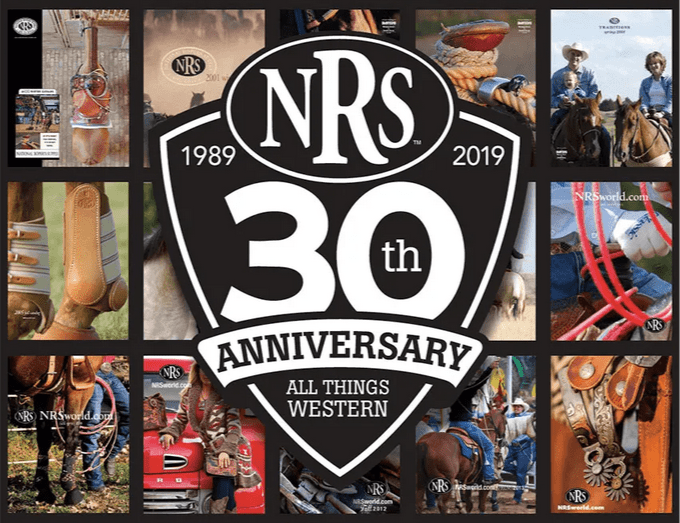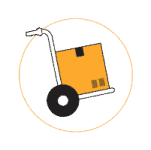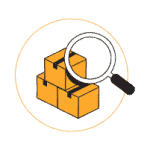From a content marketing perspective, blogging is one of the best, most effective, and most sustainable ways to attract, retain, and increase organic traffic to your store.
It's so effective that according to data from DemandMetric, businesses that blog have 67% more leads monthly than those that don't.
This could also explain why, according to blogging statistics from Orbelo, 92% of content marketers blog and also why, according to Data Box, 68% of marketers believe blogging is more effective than ever.
What does all this tell you as a Shopify store owner?
It should tell you that a regularly updated blog is a great way to drive traffic to your Shopify store!
That's why, in this article, we will showcase ten successful Shopify blog examples, highlighting some key things the blogs do well and what you can learn from them.

10 Great Shopify blog examples
Let's jump right in, shall we?
1. Sounds True

Sounds True is an independent multimedia publishing company founded in 1985 by Tami Simon.
The company embraces the world's major spiritual traditions, the arts, and the humanities, something reflected in its published works.
Their blog has a very appealing layout segmented into three sections; the most recent posts, customer favorites, and timeless classics, as shown in the screenshot below:

The blog features entries from different authors published by the company, with an author bio and the author's publications—blogs and books— integrated at the tail end of each blog, as shown below using Rachael Wooten's example.

The blog has a vibrant comment section readers use to engage with the authors.
Given all this, it should be no surprise that Sounds True generates $25M-$50M in annual sales revenue, as indicated by SimilarWeb.

Although the brand's traffic and engagement metrics have steadily decreased in the months leading up to this article, its resource center, home to its blog, receives over 100k unique visits monthly.

The brand and its blog are clearly doing well, meaning you can learn a few things from them.
What's noteworthy and worth learning from this Shopify blog example?
Here are a few things Sounds True has done well that you can integrate into your Shopify blog.
Visually appealing layout
As mentioned, the brand segments its blog into three main sections, making its layout appealing and easily accessible. The brand's pages and blog layout also use plenty of negative/white space.
Reader engagement
As shown in one of the screenshots above, the Sounds True blog has an engaged comment section—more than 100 comments on some blog posts is no mean feat.
Categorization, labeling, and blog tagging
Sounds True does a fantastic job of categorizing, labeling, and tagging its blogs with relevant tags and categories.

Consistent posting
On average, Sounds True posts five or more blog posts a month, which, while not high, meets the recommended practice of publishing a blog one to four times a week.
Overall, there's much to learn from how Sounds True uses its blog, the brand's categorization strategy, and the reader-friendly layout.
Quick loading
Even though the blog could do a better job at core web vitals optimization, especially LCP, blog pages load relatively fast.
That's perhaps why most of their core performance metrics are in the green, according to PageSpeed Insights.

Why is page speed optimization important for Shopify blogs? It is important because it ensures your pages and content load fast, which helps with SEO by lowering your bounce rate.
2. Brooklinen

Founded by Vicki and Rich Fulop, Brooklinen delivers high-quality and affordable home essentials such as sheet and bed sets, bath accessories, robes, loungewear, and so much more.
Their blog, Brookliving, features various stories, tutorials, and features. The blog has a beautiful design with a simple, user-friendly layout.
Most articles are short reads populated with high-quality images that product-place different Brooklinen products.
Each blog has a CTA that prompts the reader to share the article on Twitter, Facebook, or Pinterest.

According to SimilarWeb, Brooklinen has an annual revenue of $25M-$50M.

Additionally, according to SimilarWeb, the site generates over a million unique visits per month, with some months receiving as high as two million unique visits.

All this data clearly shows that this brand has an effective content strategy and approach you can learn and use as inspiration for your Shopify blog.

What's great and worth learning from this Shopify blog example?
Here are a few key things you can learn from this blog:
Quick loading
According to data from PageSpeed Insights, Brooklinen can do a better job of optimizing some of its core performance metrics, especially by optimizing its Largest Contentful Paint (LCP) time.

However, their pages and articles load relatively fast, which is good for their audience.
Visually appealing layout
The blog section has a visually appealing layout that uses plenty of ‘negative spaces' and compelling graphics.

Optimized and high-quality images/graphics.
As the screenshot above shows, Brooklinen uses captivating and optimized blog headers that attract its audience.
3. Black Rifle Coffee

Black Rifle Coffee is a Veteran-founded and operated company that sells coffee and helps service members transition from the military into entrepreneurship. They assist veterans who want to launch a business.
The company has a blog on its Shopify-hosted store and a YouTube channel where they share humorous, engaging, and informative blog and visual content.
Revenue-wise, this brand generates $200M-$500M annually, as shown by SimilarWeb.

On the traffic front, the brand receives over 900k unique monthly visits:

Of this traffic, 41.47% is from organic search, as shown below:

What's great and worth learning from this Shopify blog example?
Here are a few things worth learning from this Shopify blog example:
When you land on the BRCC blog, you'll quickly notice that the segmentation and categorization make it easier to jump to specific blog categories.

Brand vision and voice consistency
Most blogs Black Rifle Coffee publishes stay true to its unique brand voice, and its blog posts—and visual content on YouTube—are usually witty and personable.
Simple but user-friendly design
This brand has a minimalistic and reader-friendly blog design that uses lots of negative space complemented with good graphics to highlight its various content, as shown by the screenshot above.
4. Survival Frog

Survival Frog sells survival and preparedness products. Byron Walker started the company in 2009.
The brand started as Peak 10 Publishing, selling books, CDs, and DVDs. It later evolved into Survival Frog, an industry leader in the physical survival and outdoor gear niche.
The brand's blog publishes topical and evergreen content on preparedness and survival. They publish consistently and often twice or more a month.
Revenue-wise, SimilarWeb shows us that the brand generates $5M-$10M in annual revenue.

On the traffic front, Survival Frog gets 100K+ unique visits per month, with 49.7% of that being direct traffic and a healthy 14.6% being organic search traffic—we can assume their blog contributes a significant portion of the search traffic.

What's great and worth learning from this Shopify blog example?
This Shopify blog example has done a few things well that you can learn from; they include:
Brand consistency
This brand has a consistent blogging voice.
For example, when you read most of their articles, you will notice that they write all their published articles in second person prose (you), often addressing the reader, as shown in the screen capture below:

Consistent posting
Survival Frog publishes four or more articles per month, which while not high, is in line with the recommended guidelines of publishing at least a blog a week—publishing twice or more a week is the best for organic traffic generation.
For example, in March 2023, Survival Frog published four articles, all on Monday, all a week apart, as shown in the screenshot below from their blog:

Quality evergreen content
Because the brand has niched down, it only publishes relevant, high-quality, evergreen preparedness and survival content, as shown by the screenshot above.
5. NRS World

NRS World started as a small family-owned western store in a strip mall in Decatur, Texas. It has become a recognizable brand in the ‘western world' niche.
David Isham, the brand owner, acquired the business in 1989 and transformed it into what it is today: a well-established brand that sells all things ranching and western world wear.
Their blog, How to Cowboy, provides essential information on the Western lifestyle, including tips and guides.
On the revenue front, the brand generates $50M-$75M in annual revenue, as shown by SimilarWeb.

Traffic-wise, the store gets over 150K unique visits per month, with a significant 36% of that traffic being from organic search, as shown in the screenshot below:

What's great and worth learning from this Shopify blog example?
Here are some great things about this blog that you can implement in your Shopify blog:
Quick loading
Loading times are a vital performance metric because slow page load speeds can increase your bounce rate.
Of the Shopify blog examples we have focused on today, NRS has one of the better performance metrics, most of which are in the green or okay levels, as shown below:

Visually appealing layout
The How To Cowboy blog has a visually appealing, tiled design; this makes scanning the blog content easier, as shown below.

Optimized and high-quality header images
As you can also see from the screenshot above, NRS uses captivating and relevant blog headers that entice readers to click through.
6. Soylent

Founder Rob Rhinehart and co-founders Matt Cauble, John Coogan, and David Renteln developed Soylent as a nutritional experiment.
These software engineers set out to engineer better food for themselves, which is how the brand started.
Soylent's mission is to make complete, sustainable nutrition accessible, appealing, and affordable.
The brand prioritizes sustainability by adhering to environmentally friendly farming and production practices.

Their blog is among the best on this list, ticking all the boxes on what makes a Shopify blog a great, successful example.
The blog is simple, structured, and stunning. The content is timeless and quality, and the brand has established itself as a nutrition authority.

As you can see from the screenshot above, the brand uses high-quality and relevant images.
The articles are top-notch, reader-centered—giving readers immense value— and SEO-optimized with plenty of headings, graphics, and internal and external links.

What's great and worth learning from this Shopify blog example?
There're a few key things the Soylent blog does well and that you can learn from or use as inspiration for your Shopify blog:
Relevancy
One of the many things Soylent does incredibly well with its blog is ensuring that every blog they create and publish relates to its brand mission: helping people live a healthier lifestyle. We can see this in the example blogs below:

High-quality and evergreen content
This relates to the point above.
If you look at most of the content published on the Soylent blog, you'll see that they publish evergreen content readers can bookmark and reference for their healthy lifestyle.
Blog categorization
Categorization is another thing the Soylent blog does exceptionally well. When you land on the brand's blog, you'll immediately notice the various blog categories.
This makes it easier for their readers to jump to various relevant categories based on what they want to read.

Some other things the Soylent blog does well include:
- Navigation. This Shopify blog example has a straightforward navigation menu that makes it easier for visitors to jump to various website sections.
- Responsive and mobile-friendly design. According to Google's mobile-friendly test, the Soylent site is responsive.

Related product/more stories
At the end of each blog, there's a related product or more stories section, which is a great way to keep readers engaged and motivate them to check out some related products or articles.

7. Blenders Eyewear

Blenders is an eyewear company that sells high-quality eyewear at affordable prices.
Formed 11 years ago by Chase Fisher, the company has grown to incorporate different essential and luxury eyewear styles.
Revenue-wise, SimilarWeb shows us that this brand generates $25M-$50M annually.

On the traffic front, we can see that the site gets over 400K unique visits per month, with a healthy 23.47% of this traffic coming from organic search.

Their blog features brand news and updates and acts as a lookbook for their diverse eyewear collection.
What's great and worth learning from this Shopify blog example?
This Shopify blog example does a couple of things well that you can learn from and replicate with your Shopify blog. These include the following:
Quick loading
According to Pagespeed Insights, most of this brand's core metrics are in the ‘green' or at acceptable levels, which is good for SEO:

Great, visually appealing layout and blog headers
One thing that stands out about this blog is its great layout.
The brand uses plenty of white spaces, amazing-looking and relevant graphics, and a contrasting blue for hyperlinks. All this makes the blog pop!

Categorization
Like most Shopify blog examples on this list, the Blenders eyewear blog has good categorization, first when you land on their main blog and after you open any article.

8. Sphero

Sphero designs and develops educational robots and Science, Technology, Engineering, Arts, and Mathematics (STEAM) products.
Founded in 2010 by Ian Bernstein and Adam Wilson, the brand offers a range of robots that buyers can program and control through smartphone apps. The products are engaging, educational, and appropriate for all ages.
The Sphero blog covers topics related to STEAM education, robotics, and the company's products. Some of the main topics covered on their blog include:
- Product updates and releases
- STEAM education
- Robotics and technology
- Customer stories
- Company news and updates
Overall, the Sphero blog is a valuable asset for those eager to expand their knowledge about the interplay between STEAM education and robotics and how they shape the future of education and technology.
Revenue-wise, SimilarWeb shows that the brand generates $15M-$25M annually.

On the traffic front, the blog gets 300K+ unique visits per month, with a significant 49.48% being organic.

What's great and worth learning from this Shopify blog example?
Here are some things this blog does well that you can replicate on your Shopify blog.
Unique blog design and layout
Most of the Shopify blog examples on this list use a combination of white, black, and some other color for contrast.
Sphero differentiates itself by using a dark background, white text, and a combination of blue and a reddish pink for titles and hyperlinks. These design choices give the brand's website a very distinct look.

Relevant and user-centered content
As mentioned, Sphero is in the STEM education niche. The blog stays true to this by publishing thematic STEM-related actionable content, as shown in the screenshot below.

Quick loading
According to PageSpeed Insights, this Shopify blog example has good core vitals, with metrics like Large Contentful Paint (LCP), First Input Delay (FID), and Cumulative Layout Shift (CLS) all being in the ‘green' or at acceptable levels—not in the ‘red.'

9. Tiger Fitness

Tiger Fitness sells nutritional supplements, workout gear, and workout apparel.
This Chad Vordemesche-owned brand has an extensive selection of over 8,500 items from top brands such as MTS Nutrition, EthiTech Nutrition, Beverly International, Muscletech, BSN, and Optimum Nutrition, to mention a few.

Since its inception in 2001, the brand's reputation has snowballed to become a leading supplement store. The brand strives for customer satisfaction with every product and service they offer.
The website provides information and products related to fitness and nutrition. In addition to the wide range of supplements, the website also offers vitamins, protein powders, workout gear, and accessories.
Their blog section has ten subcategories: daily health, diet & weight loss for women, motivation, news, nutrition, supplements, tools & calculators, workouts, and videos.

The blog has actionable and relevant content based on the category.
For example, the diet and weight loss category focuses on diet and weight loss information such as nutrition and diet tips, weight loss success stories, product reviews, and information on healthy recipes and meal planning.
Revenue-wise, SimilarWeb tells us that the brand generates $10M-$15M in annual revenue.

On the traffic front, we can see that the site gets over 200k unique visits monthly, with a whopping 62.07% of this coming from organic search.

What's great and worth learning from this Shopify blog example?
Here are some key inspirational things about how Tiger Fitness uses its blog:
Good categorization
As already mentioned, Tiger Fitness has ten core blog categories, each populated with content relevant to that category.
This categorization makes it easier for readers to jump to a relevant category and find the information they want.
Good layout and high-quality, appealing blog headers
No matter which category you go to, you'll notice a similar, tiled blog structure, lots of negative space, popping, high-quality blog headers/images that pull you and motivate you to click through to learn more, and a contrasting color for hyperlinks:

High-quality, thematic content
Tiger Fitness does a great job of publishing relevant, high-quality, thematic content that fits into its various categories.
For example, the ‘diet & weight loss' category only features relevant content that is distinct from the content published in all the other categories.

Responsiveness
According to Google Search Console mobile-friendly test, this store is responsive and usable on mobile devices.

10. Only Natural Pet

Only Natural Pet sells natural and holistic pet products, including pet food, toys, and supplements.
According to Marty Grosjean, the founder, the company's mission is to offer pet owners a healthier alternative to conventional pet care products.
The company's blog, Holistic Healthcare Library, is a wealth of natural and holistic pet care information and resources.
The blog has a visually appealing design, great content segregation using categories, and good color contrast choices for buttons.
SimilarWeb shows Only Natural Pet generates $15M-$25M in annual revenue.

Additionally, the site gets over 250K unique monthly visits, with organic search accounting for 26.94% of this traffic, as shown below:

What's great and worth learning from this Shopify blog example?
Here are some great things about this blog you can use for inspiration for your Shopify blog:
Good categorization
Only Natural Pet has good blog categorization.
Their resource center, home to their blog, has a secondary menu and segments for popular, trending, and all articles.
This segmentation makes it easier for their readers to jump to relevant categories and articles.

Responsiveness and mobile-friendliness
According to Google Search Console mobile-friendliness test, Only Natural Pet has a responsive and mobile-friendly design.

Visual appeal and consistent posting
This Shopify blog example is visually appealing because it uses plenty of white space, eye-catching graphics, and color contrast for hyperlinks.
Additionally, the brand posts consistently.
For example, in December 2022, they published eight articles, as highlighted below, but the brand publishes an average of four blogs monthly.

Why do you need a Shopify blog?
There you have it: ten Shopify blog examples you can learn from and use as inspiration for your Shopify blog, especially from a design, content, and best practices perspective.
Now that you have these examples, you're probably curious about how a Shopify blog benefits you as a store owner.

The reasons you should blog as a Shopify business owner include the following:
- Increased visibility. Creating and publishing valuable content on your Shopify blog can help you attract more traffic and increase your brand's online visibility.
- Improved SEO. A blog can help improve your search ranking and ensure potential leads and customers find your shop through the main search engines.
- Establishing expertise. Using your Shopify blog to provide helpful information and insights can establish you as an industry leader and help you build trust with potential customers. This is perhaps why Shopify motivates shop owners to use their blogs to do a few things:
- Increased customer engagement. Blogging increases engagement by fostering a sense of community. For example, the comment section is a great avenue for readers to communicate with your brand.
- Boosting sales. A blog can ultimately increase sales for your Shopify store. For example, including a related products section at the end of your articles can encourage your audience to check out your products.
Now that you know some of the advantages of adding a blog to your Shopify store, you must be curious about what elements you should add to your blog.
Let's look at that:
Elements of successful Shopify blogs
Fundamentally, you only need to focus on two primary things to have a good Shopify blog that is an asset to your business: good content and design.
Let's take a look at those:
Content
When it comes to the content you publish on your Shopify blog, ensure that the content is:
- High-quality and relevant. Whatever niche you're in, do your best to create and publish evergreen, thematic, high-quality, informative, and engaging content.
- Optimized for organic search. While you should not go crazy with keyword stuffing, optimize your content for SEO, including using relevant keywords, internal and external links, images, optimizing your metadata, etc.
- Engaging. CTAs encourage readers to interact with the blog and your brand. CTAs could encourage readers to leave feedback, check your social media pages, or subscribe.
According to HubSpot, if brand awareness is your intention, publish an article at least once to twice a week, but if organic traffic is your aim, publish three to four new articles a week.

Design
On the design front, ensure your Shopify blog has the following elements:
- Straightforward navigation. Your Shopify blog should be easy to navigate. Strive to ensure that visitors who visit one of your pages can jump to any other page on your store. This may call on you to create primary and secondary menus.
- Visual appeal/user-friendliness. A beautifully crafted, user-friendly, and visually appealing blog can enhance the user experience and encourage repeat visitors. Like the Shopify blog examples we've looked at, use plenty of negative space, beautiful and eye-catching blog banners, and contrasting colors for buttons and hyperlinks.
- Responsive design. A good blog should load fast enough on all devices, including desktops, tablets, and smartphones. According to Semrush, higher page load speeds increase bounce rate.

Optimizing your blog is an ongoing process. Be patient, learn from what other blogs do well, and keep tweaking things.
Shopify blog FAQs
Here are answers to some frequently asked questions about Shopify blogs:
What is the purpose of a Shopify blog?
A Shopify blog allows businesses to share stories with their audience, showcase products and services, and drive traffic to their online store.
How often should I publish on my Shopify blog?
For brand awareness, publish at least one article a week, and for increased organic traffic, publish articles more frequently, say three or four times a week.
How can I increase engagement on my Shopify blog?
The best way to increase engagement on your Shopify blog is to publish relevant, high-quality content, use CTAs in content, and allow commenting and social sharing.
Can I use my Shopify blog to sell products and services?
Yes, you can use your Shopify blog to sell products and services.
For example, you can add a related products section at the end of product-centered articles to motivate readers to buy.
Summary
Before we conclude, here is a quick recap of the key takeaways from this article so you can easily remember it.
Great Shopify blogs have:
- Relevant and unique content. Your content should be well-researched, informative, original, and relevant.
- A user-friendly design. The design should be straightforward, easy to navigate, and visually appealing.
- Consistency. Update your blog regularly with high-quality and relevant content.
- Have a call to action. Ensure every blog has a clear call to action.
- Responsive. Ensure your Shopify store and blog are responsive on all devices.
- Have Search Engine Optimization (SEO). Optimize your Shopify blog for organic search.
- Have a fast loading speed. Your pages/blog should load quickly.
- Have social sharing buttons. The blog should include social sharing buttons.
- Be interactive. The blog should encourage interaction through comments.
Conclusion
In conclusion, many brands use their Shopify blogs to establish themselves as authorities in their industries, build brand trust and drive sales. As a Shopify store owner, you should also use your blog to do the same.
Like most things in this world—and on the internet—this is not an exhaustive, covers-all list. We merely focused on what we consider noteworthy Shopify blog examples and the key features that make them great.
Always remember that building a successful Shopify business involves experimenting with various ideas and keeping what works for your business.
Want to learn more about Shopify?
Ready to move your Shopify store to the next level? Check out the articles below:
- The 7 Best Shopify Webinars in 2023 | Learn for Free!
- Where to Buy a Custom Shopify Store? (Get It Premade)
- The 14 Best Free Shopify Apps to Install To Save Money in 2023
Plus, don’t forget to check out our in-depth how to start a Shopify store guide here.














